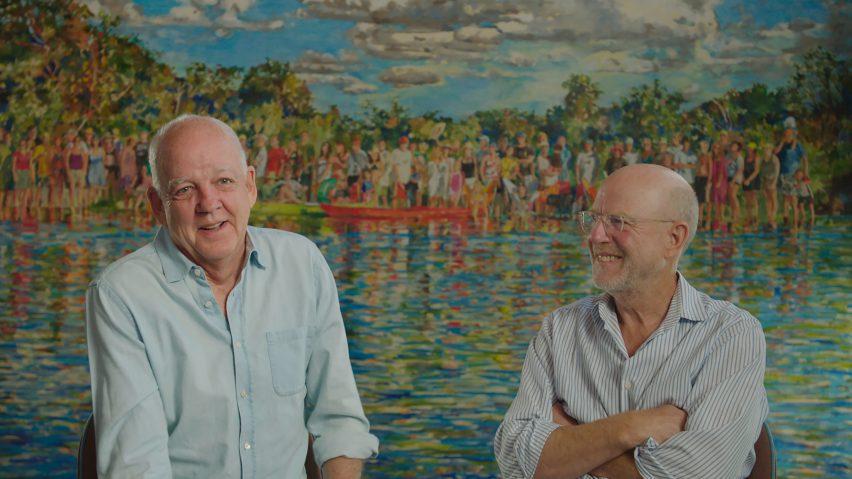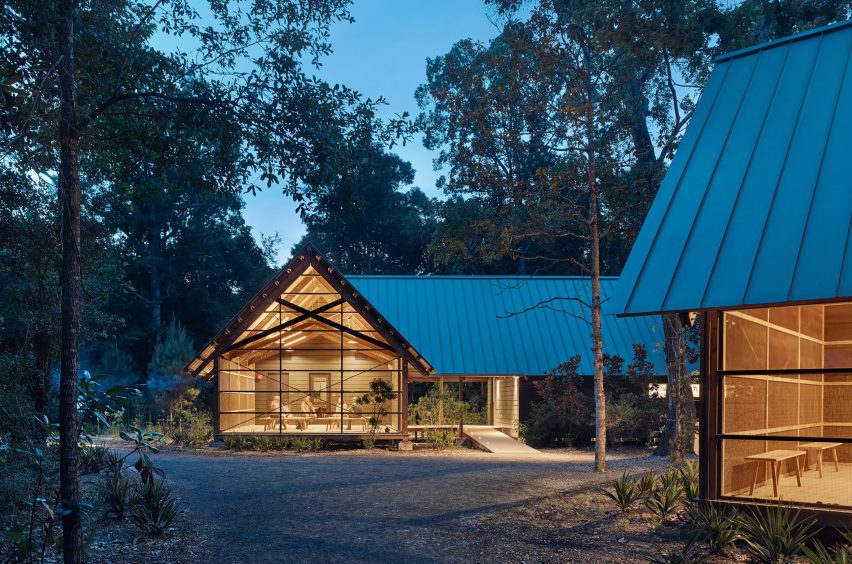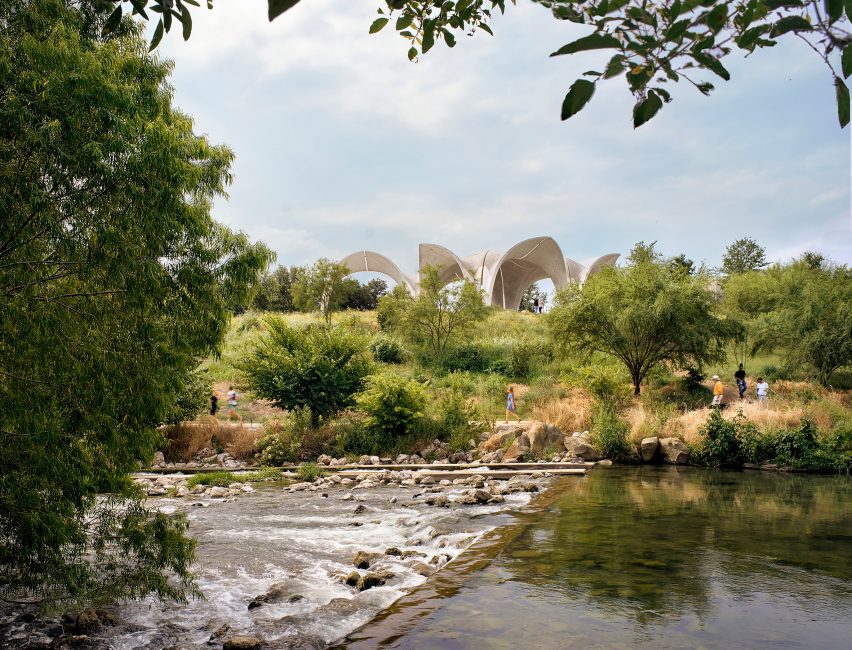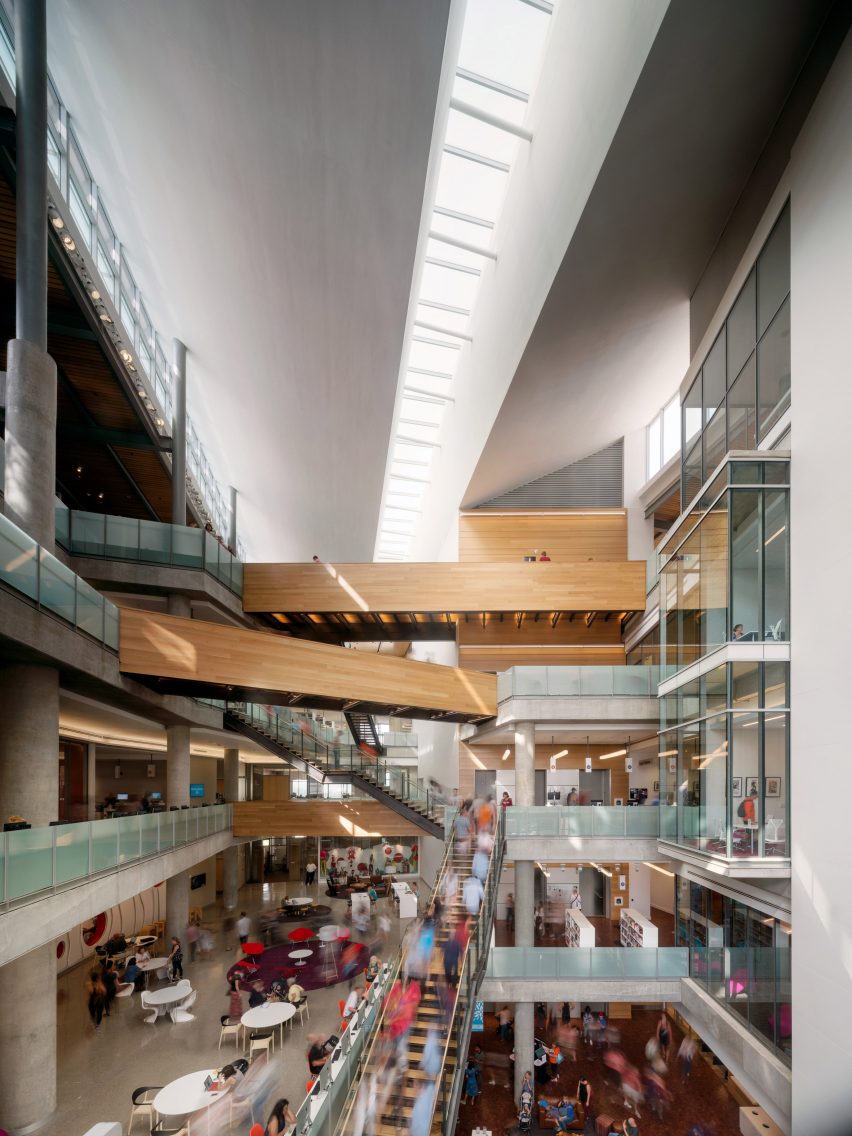
David Lake and Ted Flato win 2024 AIA Gold Medal
David Lake and Ted Flato of Texas studio Lake Flato Architects have been awarded the 2024 AIA Gold Medal for their engagement with "controversial environmental and socio-political issues".
Lake and Flato won the 2024 American Institute of Architects (AIA) Gold Medal, which is considered one of the most prestigious awards to be given to architects.
The two architects, who co-founded their studio Lake Flato Architects in San Antonio, Texas, in 1984, were cited by the eight-person jury for their ability to make "sustainability exciting in a way few other architects have accomplished".

"The projects they envision have raised the collective consciousness surrounding our climate crisis while simultaneously captivating a broad audience with buildings that are both beautiful and sustainable," continued the AIA.
"While Texas, a region grappling with unprecedented growth and climate change, seems an unlikely place for a firm focused on sustainability to thrive, they have nevertheless helped clients see architecture and sustainability as inextricably linked."
The pair has been at the helm of their studio for the last 40 years after meeting while working in the office of American architect O'Neil Ford in the late 1970s.
It has expanded over the years, opening up offices in Austin and creating projects internationally, while always focusing on Texas' built environment.

"This honor is particularly wonderful in his time now," Flato told Dezeen.
"We've got so many environmental challenges and it shows to us how important it is as architects to try and solve these really big, tough topics."
"We felt that in the beginning that buildings could make people more connected to the environment," added Lake. "What an honor to have our peers recognize our 40 years of effort to do that."
The jurors cited projects such as a pavilion in Decatur, Texas, as examples of the studio's focus on sustainability.
This pavilion, the first Living Building Challenge-certified project in Texas, was designed for an organisation promoting healthy water systems and included features that mitigated wastewater's effects on marshland.
The studio has since replicated this method in projects such as a pavilion at Confluence Park.
Also cited was Lake Flato Architects' work on a grocery chain operating in Mexico and Texas called H-E-B, for whom it created sustainable elements that set "the benchmark for resiliency in a big-box store".
Restoration has also been high on the studio's agenda in projects such as the Marine Education Center in Ocean Springs, Mississippi, which was constructed on the site of destruction from Hurricane Katrina in 2005 and was built to withstand further disasters.
Lake Flato Architects has also designed many works of residential architecture, such as a recent Corten-steel-clad house in Texas that was designed to "sit lightly on the land".
Technological innovation also features in its work, and Lake and Flato's studio has been on the cutting edge of 3D printing in architecture, working with Texas building technology company ICON to create houses with 3D-printed elements in Austin.
According to the AIA, the studio's approach has led to important ties between conservation and architecture.

"Throughout all of their groundbreaking work, Lake and Flato have ensured their buildings sit lightly on the land and nurture the life that interacts with them," said AIA.
"Their process, collaborations, and tireless environmental advocacy have directly preserved access to more than 50,000 acres of land in Texas, where less than four per cent of land is publicly available, and conserved 35,000 acres of habitats stretching from West Virginia to Florida's Everglades."
Lake Flato has been the recipient of other honours, including the AIA Firm of the Year Award in 2004, as well as hundreds of other awards including COTE's 15 Top Ten Green Project Awards and the Global Award for Sustainable Architecture in 2014.
The Gold Medal was established in 1907. Last year, the award went to Chicago architect Carol Ross Barney and other recipients include Angela Brooks and Lawrence Scarpa (jointly) as well as British architect Richard Rogers.